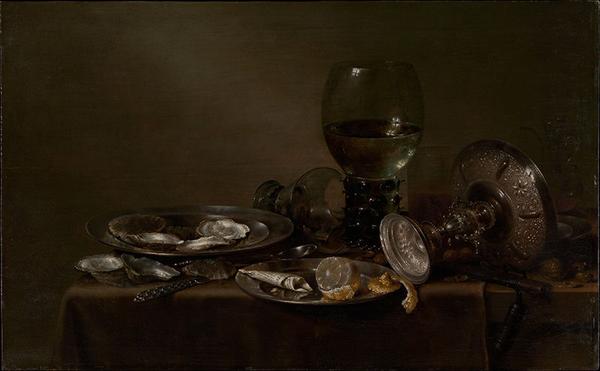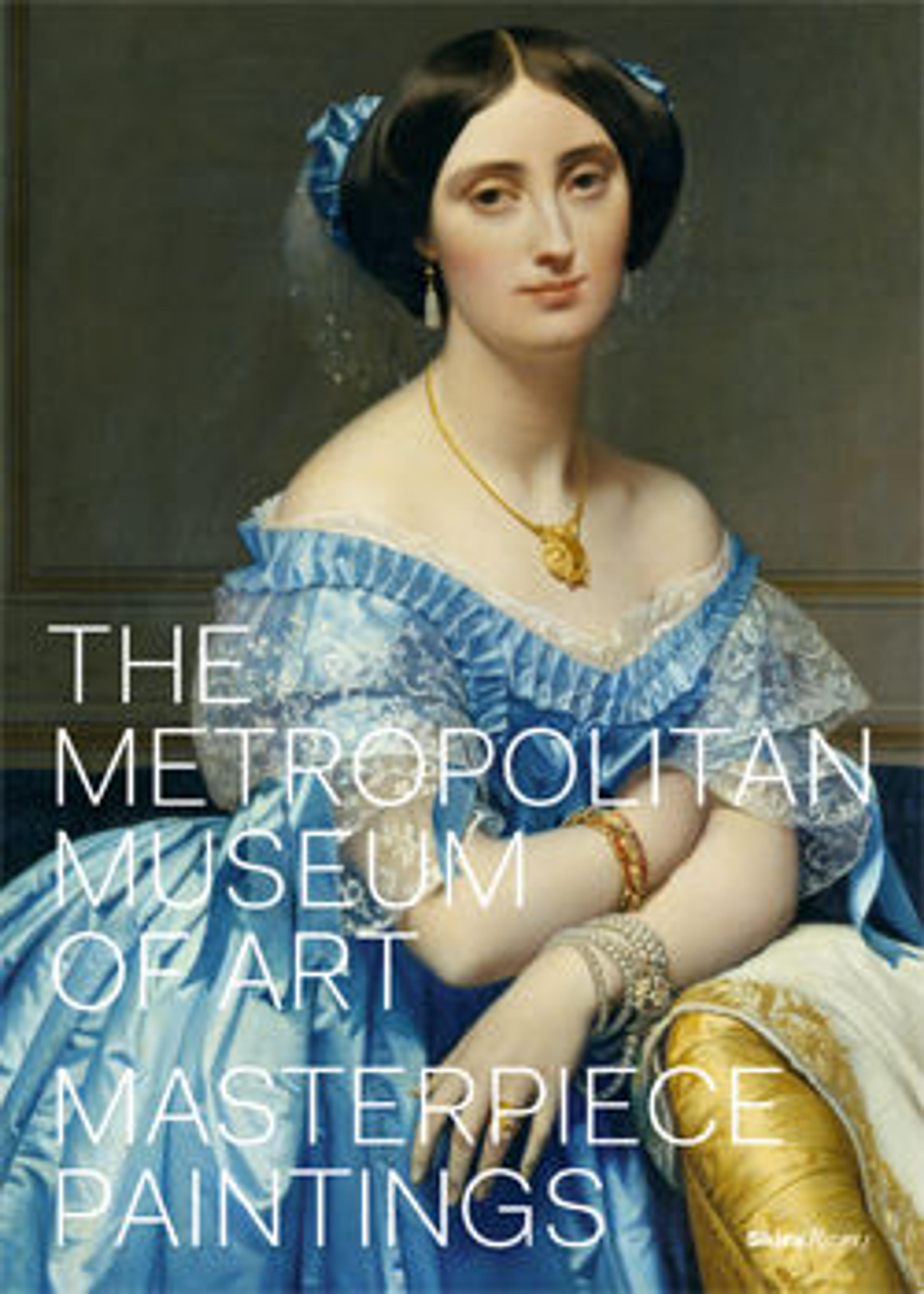Still Life with Oysters, a Silver Tazza, and Glassware
Artwork Details
- Title: Still Life with Oysters, a Silver Tazza, and Glassware
- Artist: Willem Claesz Heda (Dutch, Haarlem? 1594–1680 Haarlem)
- Date: 1635
- Medium: Oil on wood
- Dimensions: 19 5/8 x 31 3/4 in. (49.8 x 80.6 cm)
- Classification: Paintings
- Credit Line: From the Collection of Rita and Frits Markus, Bequest of Rita Markus, 2005
- Object Number: 2005.331.4
- Curatorial Department: European Paintings
Audio

5253. Willem Claesz Heda, Still Life with Oysters, a Silver Tazza, and Glassware
MARK DOTY: One of the reasons that paintings are so moving to us is that we see things that we know. And these things are sort of miraculously turned into two-dimensional representations on the canvas.
NARRATOR: Most strikingly, this painting demonstrates the artist’s remarkable skill at rendering different surface details. But beyond this, the painting presents other elements ripe for interpretation. Who was enjoying these oysters? Why did they leave so suddenly?
MARK DOTY: My name is Mark Doty. I am a poet and memoirist, essayist. As a writer, I respond so immediately to visual images. And it’s partly because you can do so swiftly in paint what would take you forever to try to do in words.
NARRATOR: Some of the objects appear familiar to us today, others less so. A page from an almanac is twisted into a cone to hold spices. A silver tazza, or shallow cup, is toppled. The tension between the appetizing lusciousness of the elements on the table and the sense of disarray makes us curious about the hidden story or context.
MARK DOTY: The eye’s going voyaging here, to see what can be discovered by testing yourself against things. And he’s also really showing his almost ridiculous capacity for evoking detail. You look at the chasing and engraving on that silver cup; it’s just such an act of accomplishment.
NARRATOR: The cup is overturned. One glass is broken. To Doty, the scene feels slightly ominous.
MARK DOTY: I don’t think this would be an easy painting to live with. That may be a compliment to it; it effectively gets a little bit under your skin, and you don’t know at first that that’s going to happen. It doesn’t look like it’s going to be disturbing, but the more I spend time with it, the more, there’s something uncomfortable, perhaps, about the relationship between the richness of these items and their disarray.
NARRATOR: This intimate, somewhat mysterious scene, leads us to question what our objects may reveal about us.
MARK DOTY: What would you put in your still life? What would you choose from your own house to represent?
More Artwork
Research Resources
The Met provides unparalleled resources for research and welcomes an international community of students and scholars. The Met's Open Access API is where creators and researchers can connect to the The Met collection. Open Access data and public domain images are available for unrestricted commercial and noncommercial use without permission or fee.
To request images under copyright and other restrictions, please use this Image Request form.
Feedback
We continue to research and examine historical and cultural context for objects in The Met collection. If you have comments or questions about this object record, please contact us using the form below. The Museum looks forward to receiving your comments.
